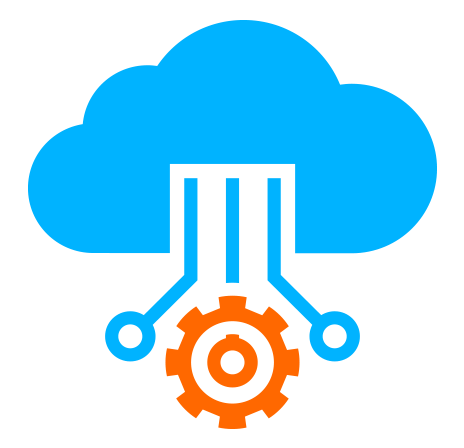 Server
Colocation
Server
Colocation
 CDN
Network
CDN
Network
 Linux Cloud
Hosting
Linux Cloud
Hosting
 VMware Public
Cloud
VMware Public
Cloud
 Multi-Cloud
Hosting
Multi-Cloud
Hosting
 Cloud
Server Hosting
Cloud
Server Hosting
 Kubernetes
Kubernetes
 API Gateway
API Gateway

Machine learning (ML) has evolved from being a niche research topic to a mainstream technology driving everything from self-driving cars to personalized healthcare. Yet, one factor remains constant across all successful ML projects — computational power. Training models on massive datasets demands far more processing power than traditional CPUs can deliver.
According to a report by MarketsandMarkets, the global machine learning market is projected to reach USD 209 billion by 2030, growing at a CAGR of nearly 36%. This surge is largely due to advancements in GPU technology and cloud computing, which together make large-scale model training faster and more accessible.
However, not everyone can afford high-end GPUs like NVIDIA A100, H100, or RTX 6000. Building and maintaining on-premise GPU infrastructure involves massive upfront costs, regular maintenance, and scalability challenges. That’s why more developers, researchers, and enterprises are choosing to rent GPUs for machine learning through cloud hosting platforms.
Renting a cloud GPU server lets you access high-performance computing power whenever you need it — without worrying about hardware limitations or upfront investment. In this blog, we’ll explore why renting GPUs for ML has become the go-to choice for developers, how it accelerates model training, and what to look for when choosing a cloud GPU hosting provider.
Before diving into the rental benefits, it’s important to understand why GPUs are so crucial for machine learning.
A Graphics Processing Unit (GPU) is designed to perform parallel computations — handling thousands of operations simultaneously. Machine learning, particularly deep learning, relies heavily on repetitive matrix multiplications and tensor operations. These are highly parallelizable, making GPUs far more efficient than CPUs for model training.
For instance, training a large convolutional neural network (CNN) on a CPU could take days or even weeks. The same model can be trained in just a few hours using a GPU-based cloud server. This speed advantage is why almost all modern ML frameworks — TensorFlow, PyTorch, and Keras — are optimized for GPU acceleration.
When paired with cloud hosting, GPUs unlock flexible, on-demand scalability that traditional hardware setups simply can’t offer.
Buying top-tier GPUs is expensive. A single NVIDIA H100 GPU can cost around $25,000, and you’ll need multiple units for large-scale model training. Add cooling systems, power costs, and server maintenance — the total expense can be overwhelming.
By opting for GPU rental in the cloud, you can access the same hardware for a fraction of the price. You pay only for what you use — whether that’s a few hours, days, or weeks. This pay-as-you-go model allows startups, students, and research teams to experiment and innovate without being constrained by budget or infrastructure.
Machine learning workloads aren’t static. Sometimes you’re experimenting with small models; other times, you’re training deep neural networks on terabytes of data. Renting GPUs through cloud hosting providers gives you complete flexibility — you can easily scale up resources during intensive training and scale down once done.
Cloud GPU rental services typically offer access to the latest GPUs such as NVIDIA A100, H100, or RTX 4090. Instead of upgrading your own hardware every year, you get instant access to cutting-edge technology for AI model training and deep learning workloads.
When you rent a cloud GPU server, the provider takes care of everything — from setup to cooling to updates. This means no downtime, no troubleshooting, and no system management headaches. You can focus entirely on developing and optimizing models instead of worrying about infrastructure.
With cloud GPU hosting, your resources are accessible from anywhere. Teams across different geographies can work collaboratively on the same models and datasets through remote access. This makes GPU rental in the cloud ideal for distributed ML teams and research groups.
Machine learning involves several stages — data preparation, training, validation, and deployment. Each of these processes can benefit significantly from GPU acceleration. Let’s look at how renting GPUs can make your ML pipeline faster and more efficient:
Data preprocessing often involves transforming large datasets into a machine-readable format. With GPU computing, this process can be parallelized, reducing preprocessing time dramatically.
Training deep learning models like transformers, CNNs, or RNNs involves millions of computations. GPUs handle this effortlessly. Renting GPUs allows you to run multiple experiments simultaneously and shorten model iteration cycles.
Tuning hyperparameters is time-intensive. With multiple rented GPUs, you can run several configurations in parallel, accelerating the optimization process and improving model accuracy faster.
GPUs are not only for training — they’re also essential during inference. With GPU-powered cloud servers, you can deploy models and make predictions in real time, ideal for use cases like fraud detection, recommendation engines, and image recognition.
The use of cloud GPU servers has spread across industries, driving faster and more reliable outcomes in:
- Healthcare – Training models for disease detection, genomics, and drug discovery.
- Finance – Fraud detection, algorithmic trading, and risk assessment.
- Retail and E-commerce – Personalized recommendation engines and demand forecasting.
- Automotive – AI-driven vehicle systems and autonomous driving models.
- Research & Academia – Training generative models, NLP applications, and simulation-based studies.
With the ability to rent GPUs in the cloud, organizations of all sizes — from startups to large enterprises — can harness AI power without heavy infrastructure investments.
Selecting a reliable GPU rental provider is key to optimizing your machine learning workflows. Here’s what you should look for:
Ensure the provider offers modern GPUs like NVIDIA A100, H100, or RTX series, which are optimized for deep learning and AI workloads.
A good provider should allow seamless scaling — adding or reducing GPU units as your workload demands.
Compatibility with TensorFlow, PyTorch, Scikit-learn, and Keras is essential for smooth operation.
Since machine learning involves handling large datasets, ensure your provider offers data encryption, compliance certifications, and privacy protection.
Look for transparent pricing models, pay-as-you-go billing, and high uptime (99.9% or more) for uninterrupted performance.
Popular platforms offering GPU cloud hosting include AWS (EC2 P4 instances), Google Cloud (A2 instances), Microsoft Azure, and Cyfuture Cloud, known for its affordable and high-speed GPU server rentals tailored for AI workloads.
Before cloud infrastructure became accessible, machine learning required expensive servers and local GPUs, limiting it to elite research institutions or tech giants. Today, cloud GPU hosting has democratized access to computing power.
Now, a startup or an individual researcher can train deep learning models using the same infrastructure as global tech companies — all by renting GPU servers in the cloud. This accessibility has not only accelerated innovation but also leveled the playing field in AI development worldwide.
In today’s data-driven world, machine learning is no longer a luxury — it’s a necessity. But powerful models require powerful hardware. Renting GPU servers for machine learning offers the perfect balance of performance, scalability, and cost-efficiency, empowering developers, researchers, and organizations to focus on building smarter models instead of managing infrastructure.
With cloud GPU hosting, you can access cutting-edge hardware instantly, train faster, deploy smarter, and scale without limits. So, the next time your ML workload starts to strain your system — don’t buy expensive hardware. Just rent a GPU in the cloud, and let high-speed computing accelerate your path to innovation.

Let’s talk about the future, and make it happen!
By continuing to use and navigate this website, you are agreeing to the use of cookies.
Find out more


